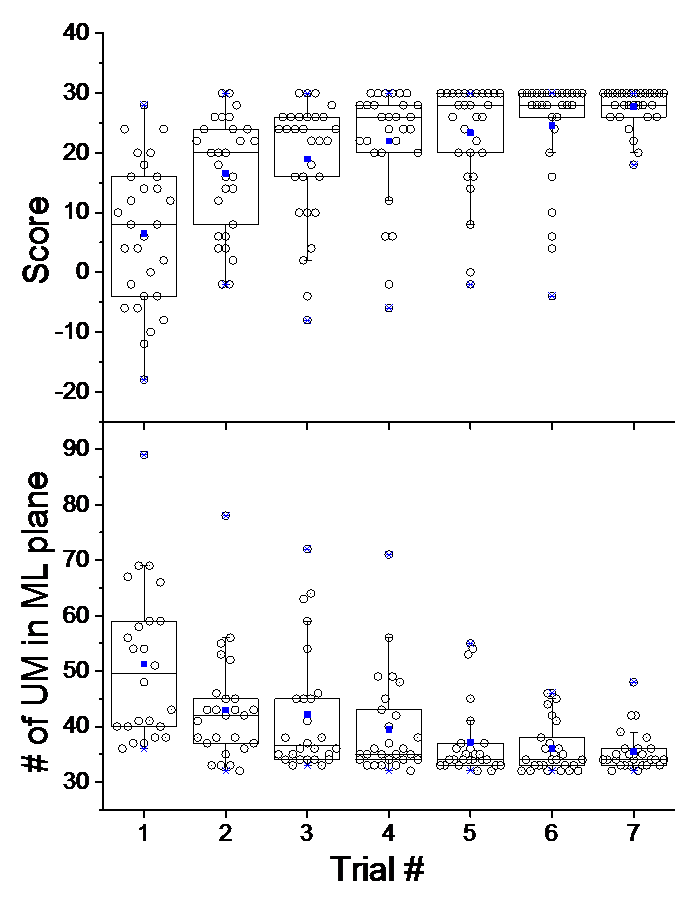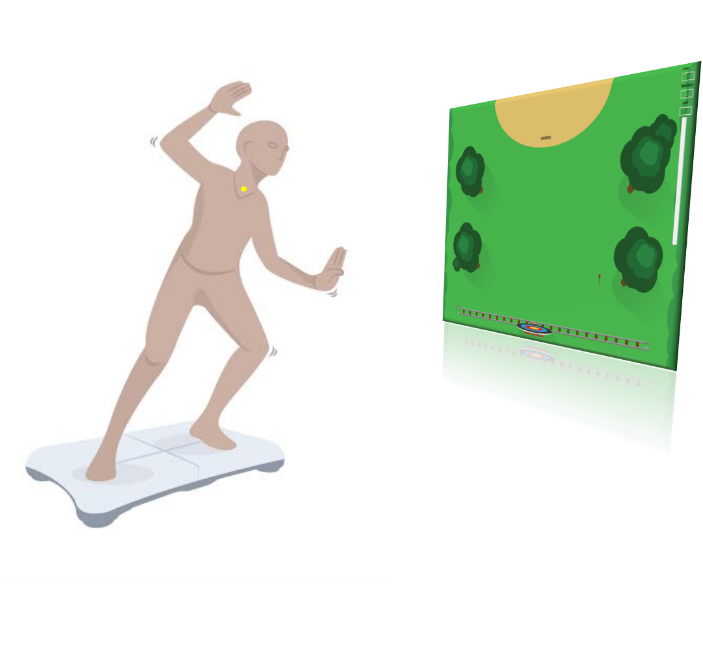Session Information
Date: Thursday, June 8, 2017
Session Title: Other
Session Time: 1:15pm-2:45pm
Location: Exhibit Hall C
Objective: To present a novel approach to assessing improvements in new motor skill learning.
Background: Several methods have been employed over the years to try to understand how the central nervous system plans and controls voluntary movements. Despite the work that has been done over the last decades, studies have provided conflicting results and have continued to focus on simple reaching tasks. In the current study, we propose a novel method (movement elements decomposition – MED) that enables the analysis of simple and complex motor tasks to further understand how the brain manages the computational load associated with motor planning and control. We present an experiment that suggest that we can measure movement complexity and smoothness from the elements decomposition point of view.
Methods: 29 Participants positioned themselves on the Wii Balance board® in order to catch the arrows in a game specifically developed for the purpose of this experiment. Participants were asked to control an on-screen target through lateral weight transfer on the Wii Balance Board® (Figure 1). Each participant performed seven trials; Participants had never used a Wii Balance board® prior to this study and no information about the game was previously provided to them. A GoPro camera was positioned in front of the participants in order to track the anatomical landmarks using the CvMob Software. In order to follow the optimization rule, all human movements have to begin and end with zero velocity. This is the basis of the hypothesis suggesting that complex movements need to be segmented by the CNS during motor planning and performance. To segment movements into ME we opted to define ME as a trajectory between two points with zero velocity. The number of movement elements were considered the complexity of movement and the natural response to motor learning is decrease complexity. To evaluate the smoothness we proposed a model as a neutral model of the intended movement and measured the irregularity W.
Results: Our results shows that the number of elements segmented in the horizontal axis and the W were significantly different between the first and last trial of the game (p<0.01), demonstrating a tendency to simplify and smooth the movement with practice (Figures 2, 3, 4 and 5).
Conclusions: The number of elements and the irregularity W are good measures to identify improvement on new motor skills acquisition.
References: Brooks VB. Some examples of programmed limb movements. Brain Res. 1974;71(2-3):299-308.
To cite this abstract in AMA style:
A.P. Quixadá, V. Sotero, J.-F. Daneault, G. Diaz, Â. Torres, J.P. Vieira, M. Fonseca, P. Bonato, N. Peña, J.G. Miranda. New method to evaluate new motor skill learning [abstract]. Mov Disord. 2017; 32 (suppl 2). https://www.mdsabstracts.org/abstract/new-method-to-evaluate-new-motor-skill-learning/. Accessed December 16, 2025.« Back to 2017 International Congress
MDS Abstracts - https://www.mdsabstracts.org/abstract/new-method-to-evaluate-new-motor-skill-learning/


